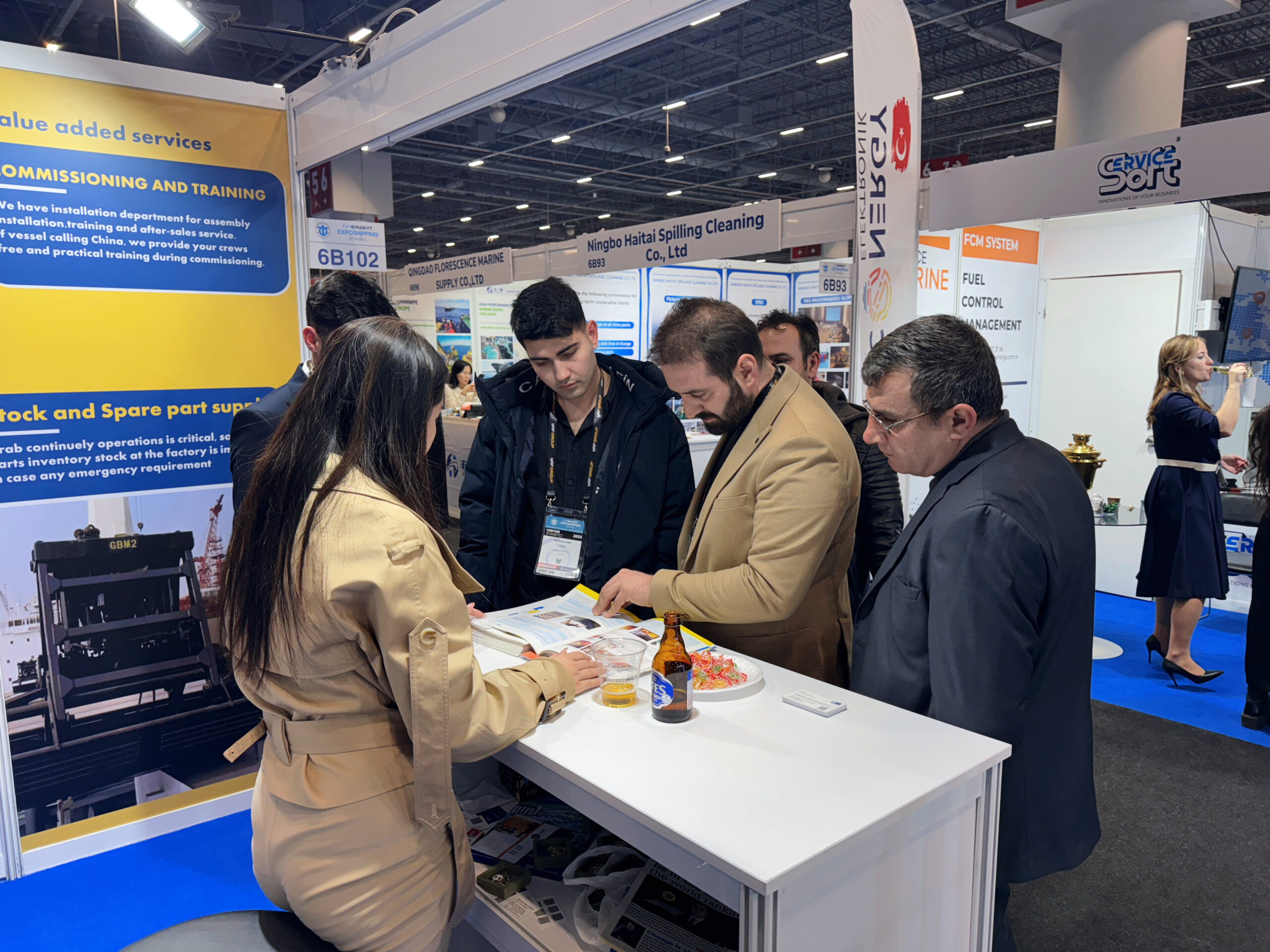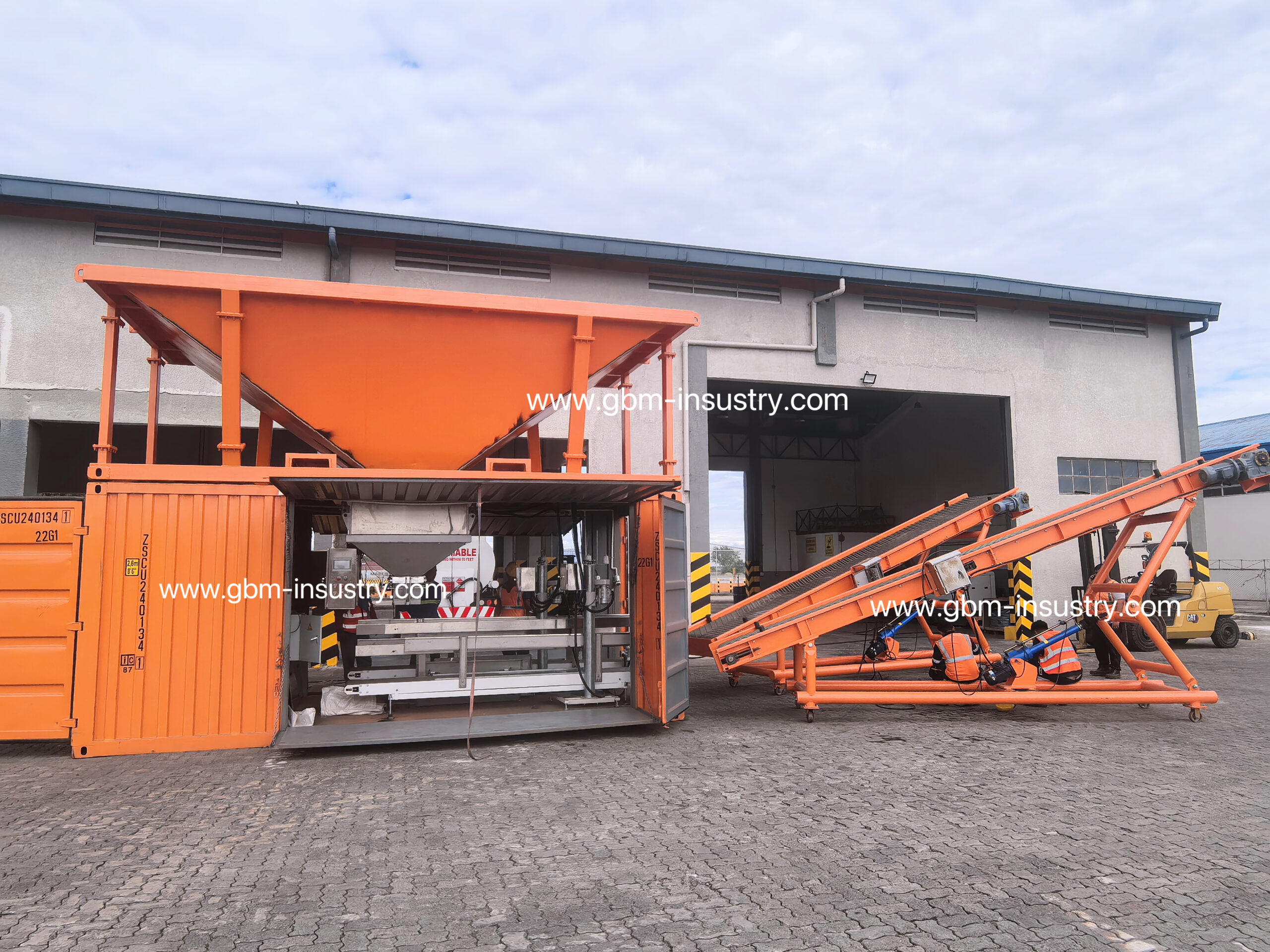In container handling operations at Chinese container ports, the typical loading and unloading scheme involves the use of shore-based container cranes combined with tire-mounted container gantry cranes (hereinafter referred to as tire crane,RTG), with tire cranes serving as the primary handling machinery for rear yards.
With the development of port construction, rail-mounted container gantry cranes (RMG) offer superior advantages over tire-mounted container gantry cranes in terms of site utilization, operational costs, work efficiency, safety, and environmental protection, presenting significant market potential.
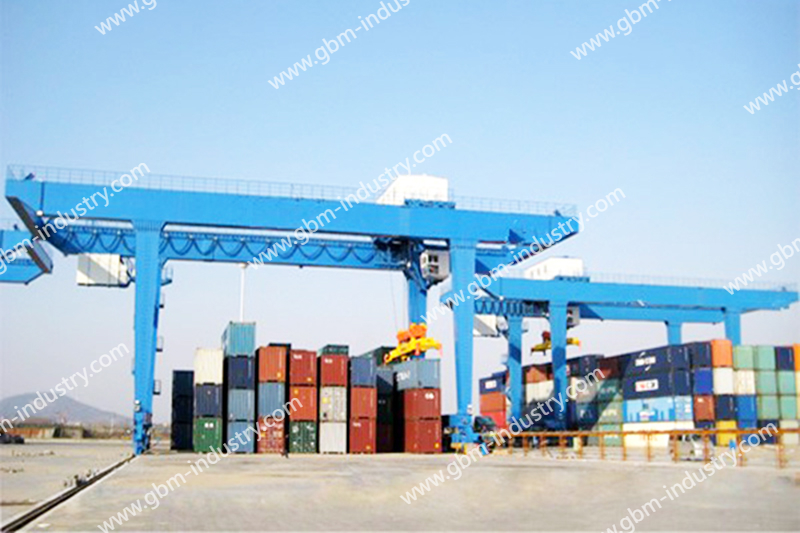
Overview and Development Trends in China and Abroad
Currently, the main manufacturers of large RMG are Paceco in the United States, Noell in Germany, Morris in the United Kingdom, Val-met in Finland, Samsung and Hyundai in South Korea, and Mitsubishi, Mitsui, and Sumitomo in Japan. With the rapid development of the international container transportation industry, the requirements for RMG are becoming increasingly high, which has led to significant progress by major manufacturers in the main parameters of newly developed cranes, such as stacking height, span, and speed.
Currently, the world’s most advanced models can stack 7 to 8 layers, lift 45 tons under the lifting device, lift at a speed of 30 m/min when fully loaded, move the trolley at a speed of over 50 m/min, and move the gantry at a speed of over 120 m/min.
For a long time, only the trolley running mechanism of RMG used AC drive. In recent years, AC drive technology has also been adopted for the lifting mechanism and gantry running, which reduces maintenance and repair costs and lowers operating costs.
Mitsui Corporation of Japan has successfully adopted an AC variable frequency speed control device, solving the key technology of wheel speed changes caused by changes in the lifting mechanism’s potential load and wheel support pressure, and meeting the requirements for container yard operations.
German companies have successfully applied their rich experience in the field of automatic control to large RMG, meeting the needs of modern container yards for automatic control. For example, European Union Terminals has applied optical cable transmission technology to reliably connect RMG with port station management computers, realizing unmanned loading and unloading operations and full automation of stacking.
According to statistics, the number of RMG orders has been increasing year by year, reflecting the market potential and application prospects of RMG. On the other hand, judging from the development trends of some famous ports in the world, RMG will develop in the direction of large-scale, high-efficiency, and automation.
China began to develop RMG in the 1990s, mainly for use in container yards in the railway system. Due to various constraints, there are still many gaps between domestically produced RMG and similar foreign products, such as relatively low technical performance, quality levels, and operational efficiency. In particular, there are no modern RMG used in seaport yards in China, and the domestic market is dominated by imported products.
With the rapid development of container transportation via railways and highways, China will inevitably form a container transportation system centered on ports and inland transshipment stations. Given the current state of container transportation, the vast railway transportation system lags far behind maritime and road transportation. The key factor is the outdated and severely insufficient container yard handling machinery, which constitutes a bottleneck for railway container transportation.
With the further development of container transportation services, increased port throughput, the gradual commissioning of new terminals, and the technological upgrading of existing terminals, the demand for large-scale, efficient, and high-performance container yard cranes will continue to grow annually.
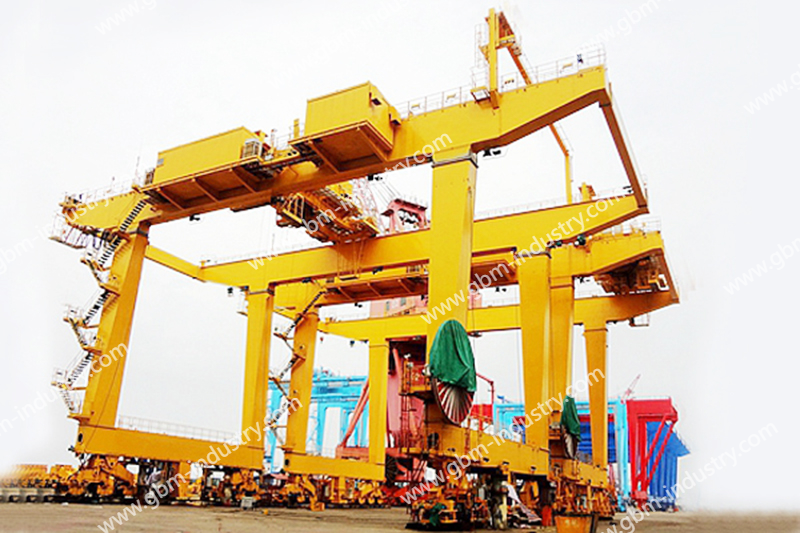
Comparison Between RMG And RTG
External dimensions
Due to limitations such as tire load capacity and machine deviation, under current conditions, it is unlikely that there will be any major breakthroughs in the external dimensions of tire cranes. Usually, the span does not exceed 23.47m (6 rows of containers plus 1 lane), and the stacking height does not exceed 18.2m (5 over 6). The span of an RMG can reach 40 m (12 rows of containers) or more, and as long as the stacking yard has sufficient load-bearing capacity, the stacking height can exceed 7 to 8 layers, and the RMG can also be extended. Therefore, the site utilization rate of an RMG is higher than that of a rubber-tired gantry crane.
Cost analysis
Currently, when technical parameters such as track gauge and speed are the same, there is little difference in the purchase price of the two types of equipment, with RMG being slightly lower. For terminal requirements, RMG can use more wheels, which means lower wheel pressure compared to tire cranes, which currently usually have 8 wheels. However, RMG requires the construction of supporting substations, laying of cables and tracks, etc., resulting in higher investment in yard construction.
During operation, RMG uses electricity directly from the power grid, while rubber-tired gantry cranes must use their own diesel engines to generate electricity. When performing the same actions and consuming the same amount of energy, using electricity directly from the power grid is less expensive than generating electricity independently. In addition, when rubber-tired gantry cranes are in a waiting state, the diesel engine also consumes some additional fuel, while RMG returns some energy to the power grid when the lifting mechanism is lowered. Therefore, the energy consumption of RMG is obviously much lower, which has a significant advantage in terms of operating costs.
Tire cranes use diesel engines, and even imported diesel engines have a high failure rate and require regular maintenance, major repairs, and minor repairs, while RMG use cable reels for power supply, and imported cable reel manufacturers can usually guarantee 3 to 5 years of trouble-free operation. RMG uses steel wheels, which basically guarantee the same service life as the whole machine, while the tires of tire cranes need to be replaced regularly.
Work efficiency
Since the position of the track and container is relatively fixed, RMG saves time on container handling and is slightly more efficient; the gantry of tire cranes often deviates, and the position of the lane and container cannot be fixed, requiring experienced drivers to frequently perform lifting device rotation and gantry deviation correction actions, which affects work efficiency. At present, there is no effective automatic deviation correction system.
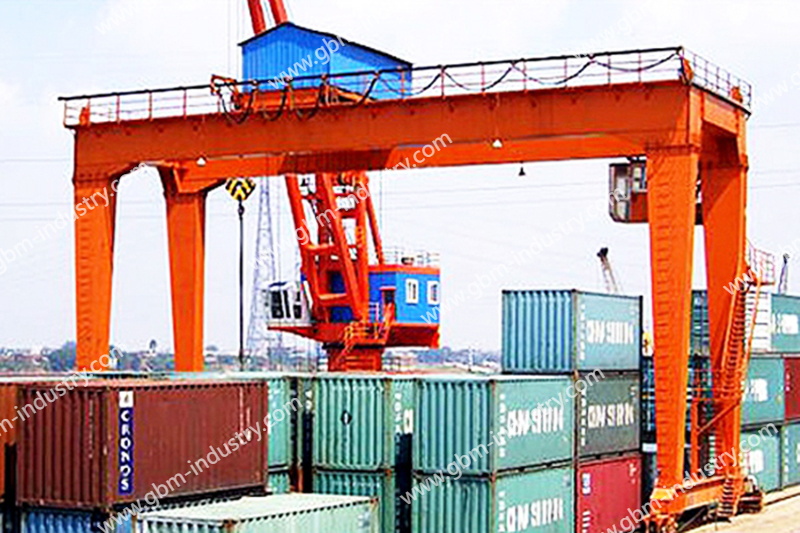
Automatic Control And Terminal Management System
Because it runs on rails, the RMG is easier to monitor and locate the status of the whole machine, and can realize a variety of automatic and semi-automatic controls to improve efficiency. With the further development of the electronic control system, in the future, the RMG may develop into an unmanned yard system that does not require a driver; while the status of the whole machine of the tire crane is difficult to locate, making it difficult to realize automatic control.
RMG can use fiber optics to communicate with the terminal control room, which has large bandwidth and good anti-interference ability, and the current technology is relatively mature. However, rubber-tired gantry cranes can only use wireless communication, which has narrow bandwidth and poor anti-interference ability. At present, most of them can only receive simple information such as container positions in one direction, and it is still difficult to complete an RCMS system like that of a shore container crane. In addition, wireless communication still has certain transmission blind spots.
A single RMG corresponds to a large container density and high stacking height, requiring a high level of management to avoid frequent container flipping.
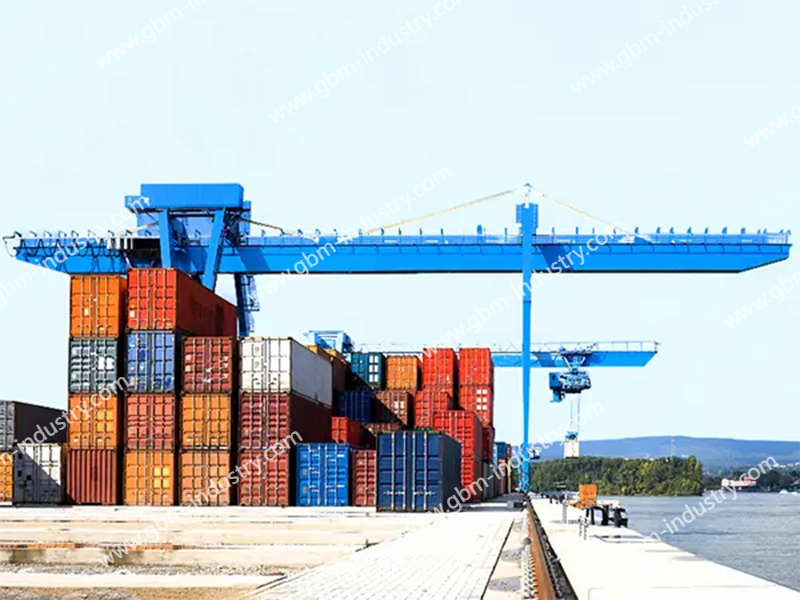
Safety And Environmental Protection
RMG runs on rails and will not deviate and collide with containers, while rubber-tired gantry cranes cannot control deviation and require collision limits to be set, and even then, collisions with containers and vehicles cannot be completely avoided.
RMG uses electricity and is clean and pollution-free, while rubber-tired gantry cranes use diesel engines to generate electricity, causing significant pollution and noise.
Although the above issues do not currently have a significant impact on ports, they must be seriously considered in the long run.
Flexibility In Relocation
RMG is difficult to relocate. Although most RMG technologies are relatively mature at present, the possibility of malfunction during operation cannot be ruled out, so at least two RMG must be configured on a single track. In addition, although arrangements can be made in the layout of the storage yard, it cannot be completely ruled out that multiple RMG will need to work simultaneously due to unexpected events on the same track.
According to foreign experience, multiple RMG are generally configured on the same track. Tyre cranes do not have this problem because they can be relocated frequently. Therefore, RMG are not suitable for some storage yards with short tracks and a large number of spans.
In order to enhance flexibility in moving between sites, there are several options for moving RMG, which is also a direction for RMG research. In addition, there are also options in foreign countries to configure a small span RMG within the span of a large span RMG.
In busy container terminal operations, GBM container spreader brings significant advantages to RMG users with its excellent performance.
Advantage Of Our RMG container spreader?
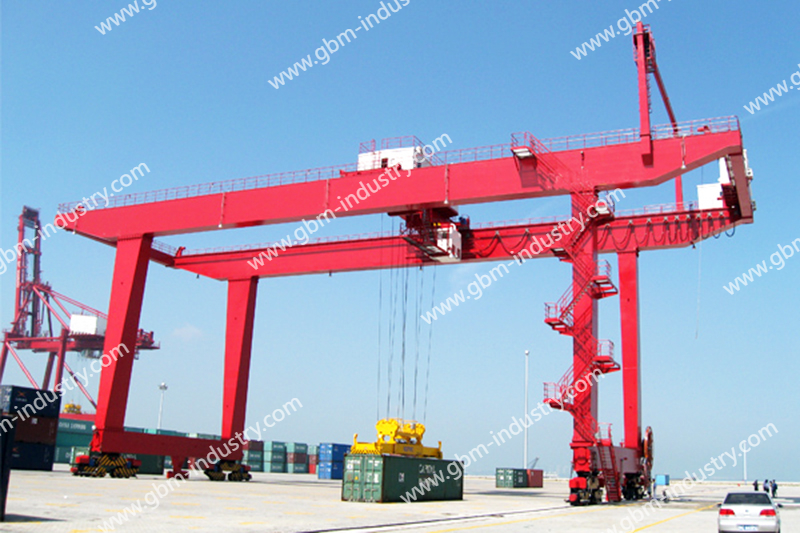
Durability and Low Maintenance Costs
Engineered for rugged port environments, our container spreaders offer:
Corrosion-Resistant Coatings: Protection against saltwater and humidity extends lifespan.
Whether it is the rapid automatic switching between containers of different sizes or the accurate and efficient lifting/lowering movements, the conversion and operation cycle time of lifting operations are greatly reduced, significantly improving the overall operational efficiency and terminal throughput capacity of RMG.
Competitive Pricing and Global Reach
As Chinese brands,we deliver high value container spreader at competitive prices, making them ideal for ports in emerging markets.
More and more African and Southeast Asian ports increasingly adopt our solutions for their affordability and adaptability to diverse operational conditions.
Conclusion
China’s independently developed RMG runs smoothly with few failures, reflecting the results of key technological research during the development process and attracting widespread attention from the domestic industry. In the construction of new container terminals in China, RMG is increasingly being used as the main loading and unloading machinery for rear storage yards.
For more information,please kindly contact us via email :sales.export@gbm-china.com



